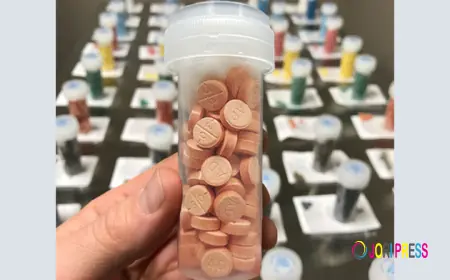Why Is Protein Purification Resin Key to High-Quality Results?
Over time, I’ve come to appreciate why protein purification resin is key to high-quality results and how its proper use can make or break a project.

When I first started working with proteins in the lab, I quickly realized that the quality of my results depended not only on my technical skills but also on the tools I chose. Among those tools, protein purification resin stood out as one of the most critical factors. No matter how careful I was with sample preparation or chromatography conditions, if the resin quality wasn’t reliable, my outcomes suffered. Over time, I’ve come to appreciate why protein purification resin is key to high-quality results and how its proper use can make or break a project.
Understanding the Role of Protein Purification Resin
At its core, protein purification resin is the backbone of affinity chromatography and other separation techniques. It provides the surface area and binding sites where target proteins interact, enabling us to separate them from complex mixtures. Without it, purification would be far less efficient, and the purity of the final product would often fall short.
I often remind colleagues that resin is not just a passive medium—it is an active partner in purification. The chemical composition, pore size, ligand stability, and binding capacity directly affect yield and reproducibility. High-quality resin ensures that proteins remain intact, active, and pure enough for downstream applications, whether for therapeutic development, diagnostics, or structural biology studies.
Why Quality Matters in Resin
When I used lower-grade resins early in my career, I noticed several issues: inconsistent binding, leaching of ligands, and reduced protein recovery. These problems not only wasted precious samples but also cost valuable time and money. High-quality protein purification resin eliminates these risks by offering consistent performance across multiple runs.
Resin quality directly impacts three critical outcomes:
- Purity – Poor resin often allows contaminants to co-elute, while high-quality resin provides sharper separation.
- Yield – With good resin, binding capacity is predictable, ensuring maximum protein recovery.
- Reproducibility – When resin behaves consistently, results are more reliable, which is essential for regulatory approval in biopharmaceutical settings.
In my experience, investing in better resin has always paid off in smoother workflows and higher confidence in results.
Applications Where Resin Quality Is Non-Negotiable
There are certain scenarios where the role of resin cannot be compromised:
- Biopharmaceutical Manufacturing – Here, protein purification resin is crucial for ensuring therapeutic proteins meet regulatory standards. Even slight impurities can trigger immune responses, making purity non-negotiable.
- Structural Biology – I’ve seen researchers spend weeks preparing protein crystals, only to have impurities ruin diffraction studies. Resin quality makes the difference between clear, interpretable structures and wasted effort.
- Enzyme Production – For industrial enzymes, resin quality determines not just purity but also activity. Damaged or contaminated proteins lead to reduced performance in end-use applications.
In all these cases, the resin isn’t just another reagent—it’s a foundation for success.
Factors to Consider When Choosing Resin
When I select protein purification resin, I follow a set of criteria that ensures high-quality results:
- Ligand Specificity – The resin must match the binding characteristics of my target protein. For example, Protein A resin is excellent for antibodies, while ion exchange resin works better for charge-based separations.
- Capacity – A resin with higher binding capacity saves time and sample volume.
- Stability – Chemical and mechanical stability ensure resin can withstand multiple cycles without degradation.
- Scalability – If I move from a small-scale experiment to large-scale production, I need resin that performs consistently across scales.
- Regulatory Compliance – Especially in therapeutic applications, resin must meet GMP (Good Manufacturing Practice) standards.
By carefully balancing these factors, I’ve been able to consistently achieve results that meet both scientific and industrial expectations.
Practical Tips for Maximizing Resin Performance
Over the years, I’ve learned several practical steps that extend resin life and improve outcomes:
- Proper Cleaning and Storage – Always clean resin according to manufacturer guidelines and store it in the correct buffer to prevent microbial growth.
- Avoid Overloading – Loading too much protein leads to poor resolution. I always calculate binding capacity in advance.
- Regular Monitoring – Tracking performance over cycles helps detect resin degradation early.
- Column Packing Technique – Uneven packing leads to channeling and reduced efficiency, so I always take care to pack columns correctly.
These simple practices help maximize both resin lifespan and data quality.
The Cost-Benefit Perspective
I used to think saving money by purchasing cheaper resin would help stretch the lab budget. In reality, it did the opposite. Lower-quality resin often failed mid-project, forcing me to repeat experiments and purchase additional reagents. High-quality protein purification resin, though more expensive upfront, has always been more cost-effective in the long run. The reduced need for repeat trials and the higher reproducibility of results easily justify the investment.
Future of Protein Purification Resin
The field of protein purification is evolving, and I see exciting trends shaping resin development. Innovations such as improved ligand chemistries, more durable matrices, and resins optimized for continuous manufacturing are on the rise. As demand for therapeutic proteins and biologics grows, so will the need for resin that ensures efficiency, scalability, and regulatory compliance.
I believe the next generation of protein purification resin will not only enhance performance but also address sustainability by offering longer lifespans and reduced environmental impact.
My Takeaway
From my personal experience, I can say without hesitation that protein purification resin is key to high-quality results. It determines purity, yield, and reproducibility—the three pillars of successful protein research and production. Whether you’re in academia, biotech, or pharmaceuticals, cutting corners on resin is a mistake you can’t afford.
If you want consistent, reliable, and high-quality outcomes, invest in the right resin and maintain it properly. It’s one of the smartest decisions you can make in protein science.
Contact us today if you’d like to learn more about selecting and optimizing protein purification resin for your applications. With the right guidance and tools, you can ensure every experiment or production run meets the highest standards of quality.
What's Your Reaction?
 Like
0
Like
0
 Dislike
0
Dislike
0
 Love
0
Love
0
 Funny
0
Funny
0
 Angry
0
Angry
0
 Sad
0
Sad
0
 Wow
0
Wow
0


















































